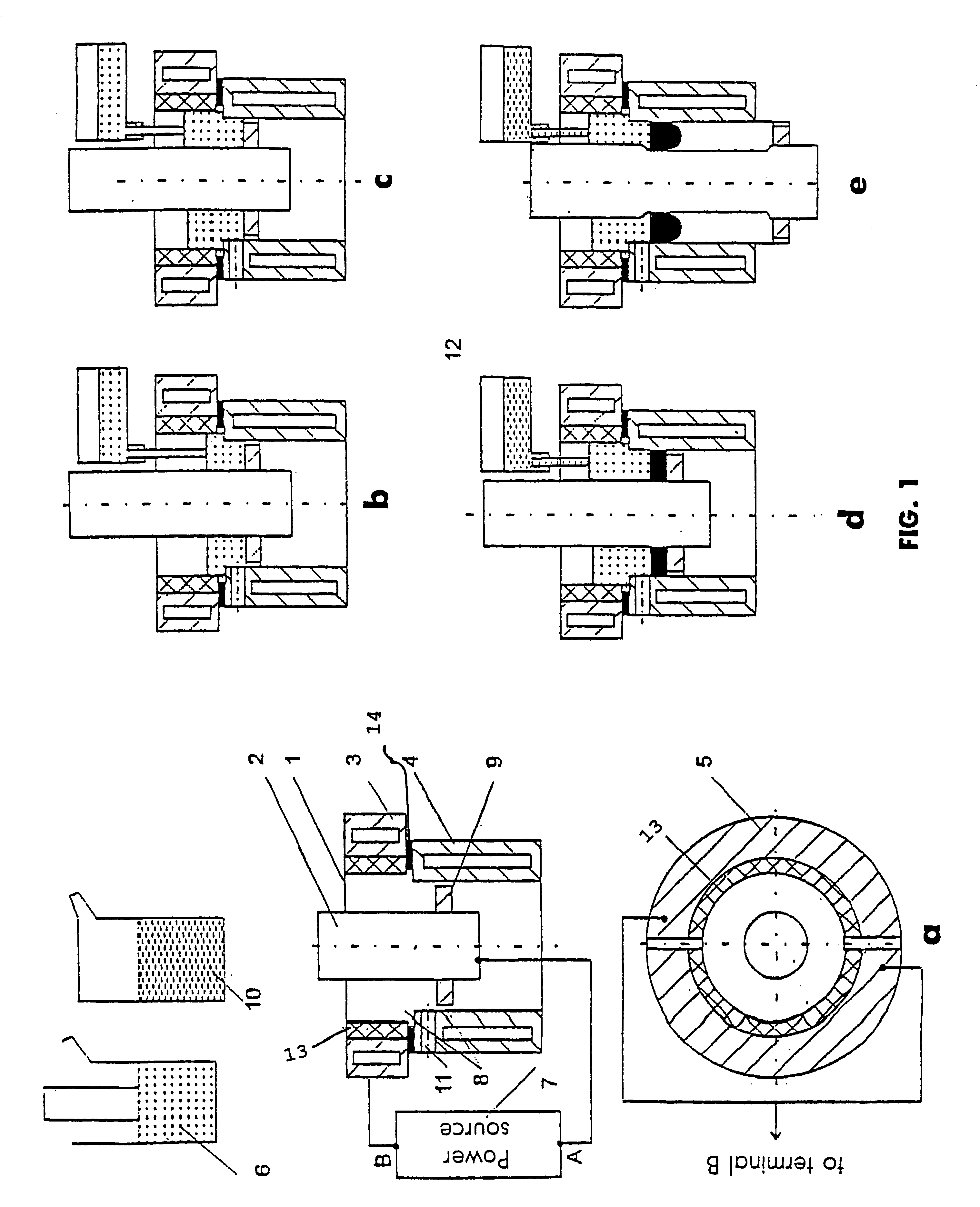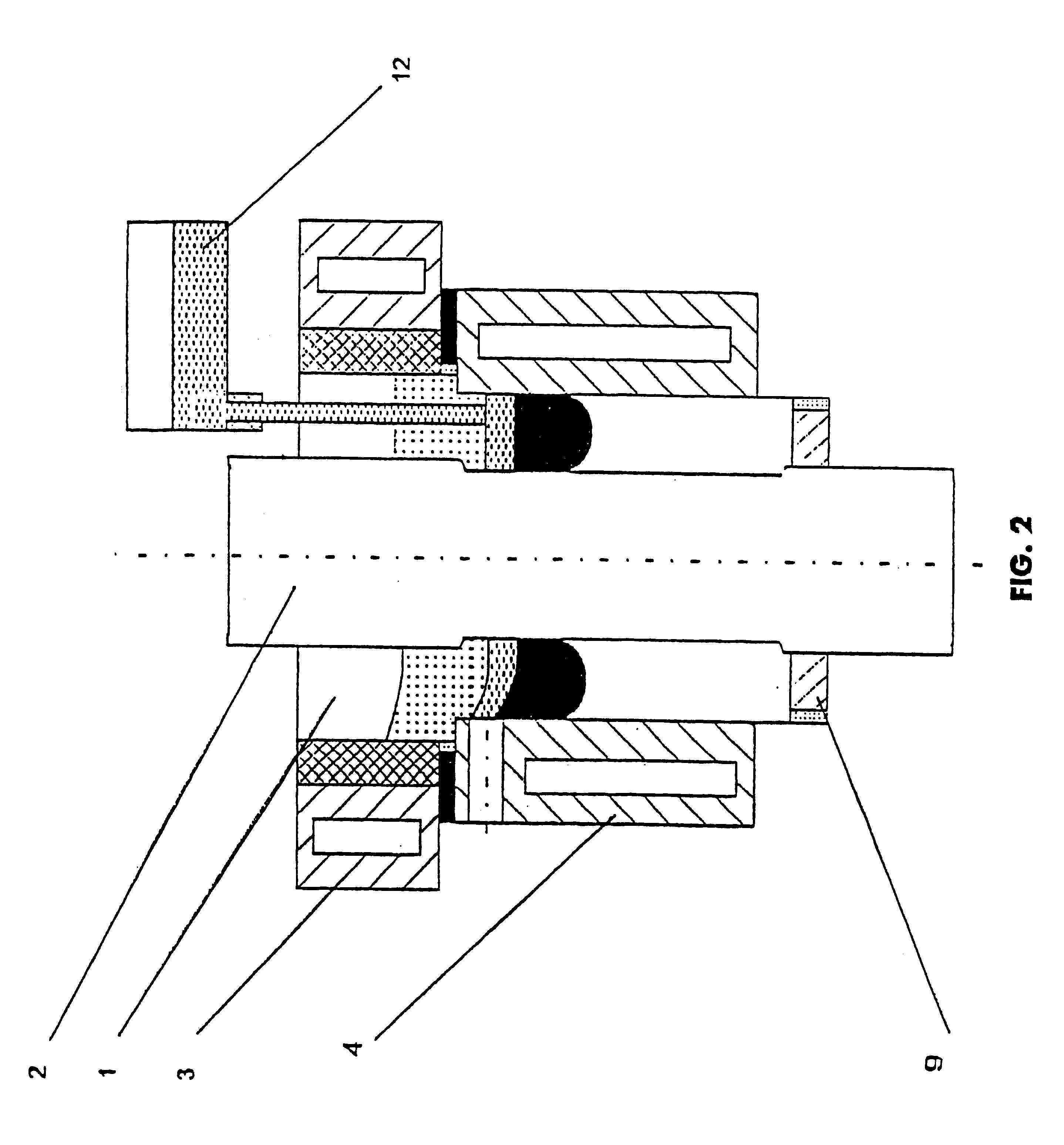Electroslag facing process
a technology of electroslag and facing process, which is applied in the field of electroslag cladding, can solve the problems of not realizing the fusion of metals, too complicated and expensive devices, and very expensive solid electrode production
- Summary
- Abstract
- Description
- Claims
- Application Information
AI Technical Summary
Benefits of technology
Problems solved by technology
Method used
Image
Examples
Embodiment Construction
The principle of the of the present invention method is reduced to the following.
A billet to be clad 2 is mounted into a current-carrying sectional mould 1 (FIG. 1,a) and a longitudinal billet axis is brought in line with a longitudinal axis of the mould. The mould is divided in sections along the height into a current-carrying part 3 and non-current carrying forming part 4. The current-carrying upper part of the mould is also divided, as a minimum, into two sections 5. Such dividing into sections provides a uniformity in current and heat distribution. The electro-insulator (14) is provided between the divided sections 5. For protective from spark erosion, the two sections 5 have an electrically conductive lining 13.
Slag is melted in a flux melting furnace 6, for example 1 / 3CaF.sub.2 -1 / 3CaO-1 / 3Al.sub.2 O.sub.3, and poured into a mould 1 up to the level shown in FIG. 1,b. Power source 7 is now switched off. Instantaneously, the highly fluid slag fills all the air gaps 8 between the ...
PUM
| Property | Measurement | Unit |
|---|---|---|
| Volume | aaaaa | aaaaa |
| Current | aaaaa | aaaaa |
| Electric potential / voltage | aaaaa | aaaaa |
Abstract
Description
Claims
Application Information
 Login to View More
Login to View More - R&D
- Intellectual Property
- Life Sciences
- Materials
- Tech Scout
- Unparalleled Data Quality
- Higher Quality Content
- 60% Fewer Hallucinations
Browse by: Latest US Patents, China's latest patents, Technical Efficacy Thesaurus, Application Domain, Technology Topic, Popular Technical Reports.
© 2025 PatSnap. All rights reserved.Legal|Privacy policy|Modern Slavery Act Transparency Statement|Sitemap|About US| Contact US: help@patsnap.com



